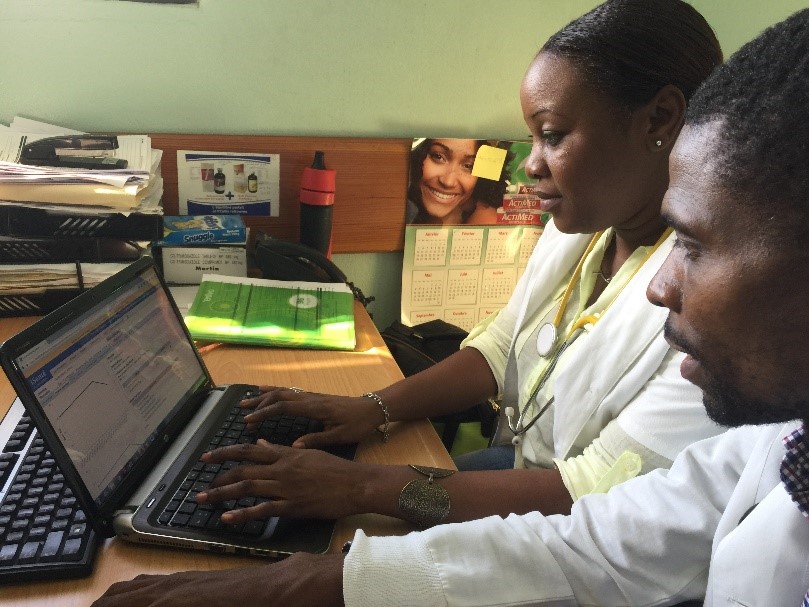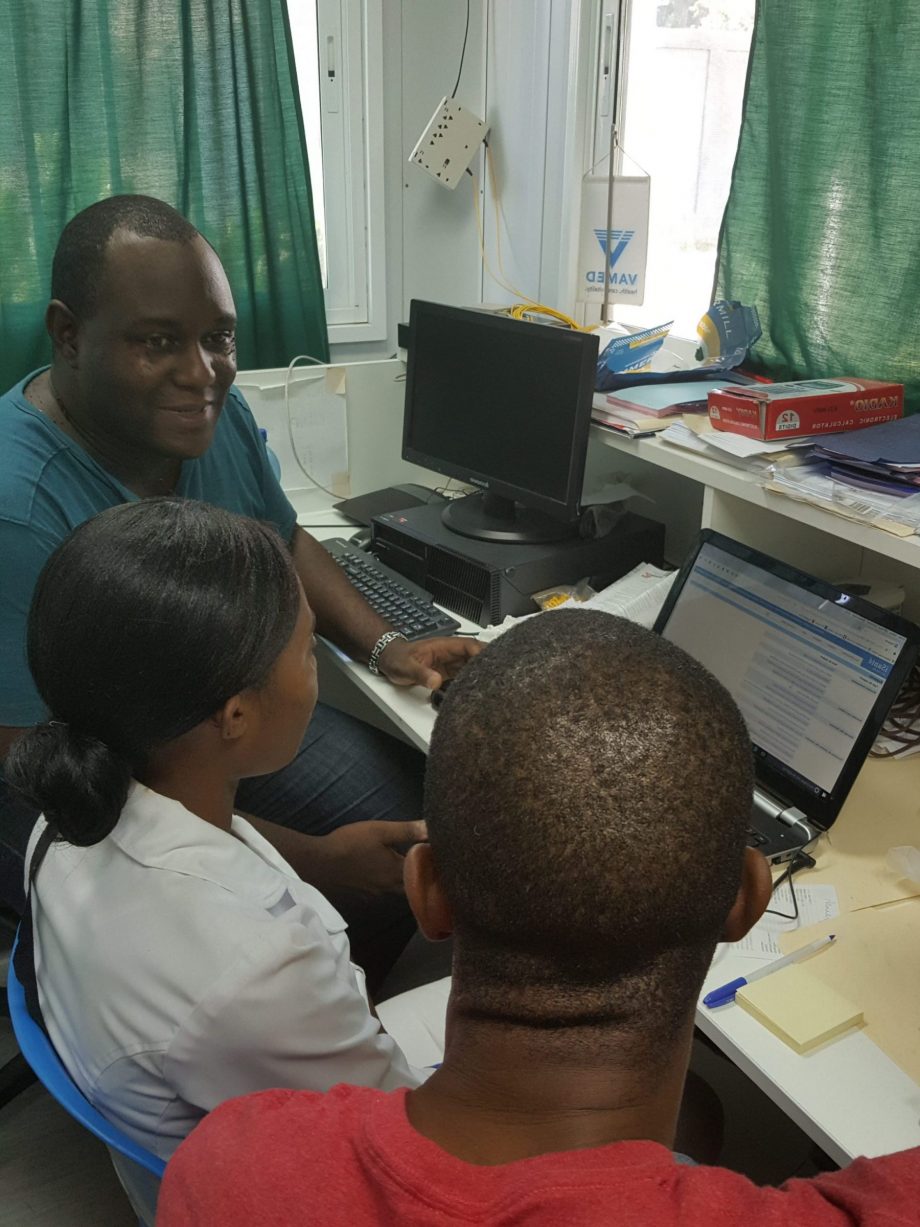
Reaching Health Standards and Creating a Client Registry in Haiti
- LocationHaiti
- ImplementationPilot 2021
Global goods teamed up to achieve healthcare sustainability and address key issues in HIV care and treatment
Many countries face complex political and funding environments, infrastructure challenges such as unreliable internet connectivity, and limited scalability due to technological, environmental, and human constraints. These circumstances have contributed to an environment where Haiti faces challenges as it seeks to provide healthcare for a population of 11 million.
Haiti’s original approach to a health information architecture included a set of facility-based EMRs built specifically for Haiti, and a rudimentary information exchange pattern to consolidate that data centrally in a consolidated server with tried and true technologies. Successfully used without major updates or alterations for over a decade, the architecture and components needed modernization to take advantage of more robust, scalable, and sustainable technologies and approaches in order to meet the needs of the users of the systems and data to achieve the overarching health goals of the Haiti government.
One of the key challenges in the Haiti HIV program is a highly transient patient population that struggles with continuity of care & treatment as they receive care across different facilities and centers, and struggling with collecting timely and accurate results to the appropriate provider for decision making. All of which can contribute to the HIV epidemic when patients are not able to maintain treatment and reach or maintain viral suppression. A social, community-driven approach was necessary to move towards modernization through harmonization and reusable and scalable standards for an implementation that improved the current care experience and addressed the healthcare challenges and the issues specific to HIV care and treatment in a sustainable and community adopted way. In 2018, the University of Washington Digital Initiatives Group at I-TECH (DIGI) was brought on to start work with the health information system (HIS) working group established in Haiti to modernize the full architecture to support improved patient identification and information workflows that support a full continuum of care.
Haiti MOH/UGP
CDC, Haiti Program
CDC, Division of Global HIV
CHARESS
Solutions
UW DIGI
Intellisoft
Community of Practice Support: Brown University, OpenHIE Communities (ARB, SHR, CR/MPI, LIS), OpenMRS FHIR Squad, OpenCR Community
The Impact
-
6 Sites
-
OpenCR in Practice
Based on the patient identified in OpenCR, the SHR uses the FHIR® International Patient Summary (IPS) to share patient longitudinal records with local facility-based EMRs in the HIV C&T clinics as patients move around the country
-
120 HIV C&T Clinics
Following assessment in the pilot program, OpenCR will then be available to the full scale of 120 HIV C&T clinics

In support of the Haiti HIS TWG, the UW DIGI team and CHARESS led the development and implementation of an OpenHIE architecture that included an electronic medical records system, client registry, and a longitudinal shared health record as the source of truth repository for patient clinical data. The modernization included the upgrade of the Haiti EMR, iSante, to the standards-based OpenMRS-based EMR, iSantePlus. Additionally, through an evaluation process, OpenCR, a FHIR®-based open standards tool was selected for its native FHIR® approach and elastic search capabilities that did not need to map data but rather a model that used data natively in the desired format. Lastly, the HAPI FHIR® server served as a foundation for the SHR.
The Approach
This team facilitated the Haiti HIS TWG with the CDC to develop standard operating procedures (SOPs) for patient identification across the country, which the information flow was modeled to support utilizing the new architectural components. The modernized patient identification process and HIV continuum of care workflow is in pilot during 2021, and will be followed by assessment, and scale to add interaction with non-OpenMRS based EMRs used in the Haiti clinics as a next phase.
-
OPENHIE CAPABAILITIES
- Patient identity management across systems
- Patient summary utilized from shared health record for treating a patient across facilities
- Patient tracking across facilities reduces lost to follow up
-
HEALTH ISSUES ADDRESSED
- Population and Public Health – Cohort identification, management, treating, and tracking
-
OPENHIE WORKFLOWS
- Send client alert workflow
- Query care services records workflow
- Search care services workflow
- Request care services workflow
- Create patient demographic record workflow
- Update Patient demographic record workflow
- Save patient-level clinical data workflow
- Query patient-level clinical data workflow